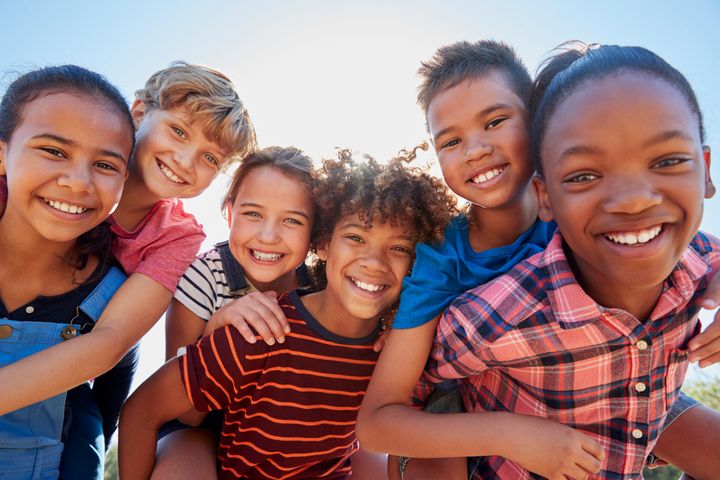
There’s nothing more unsettling than when your gorgeous, brown-skinned two-year old daughter tells you she wishes she was white. Or her preference for playing with her traditional blonde Barbie doll rather than the black and Indian Barbies I’d bought her.
My daughter is a beautiful mix of West Indian, Egyptian, Turkish and French. My husband is English, West Indian and I’m a mix of the rest. Despite my heritage, I’m fairly light-skinned, compared with my husband who has very dark skin.
What was interesting to me is that this is something my 10-year-old son has never said. He has always embraced his colour and felt completely comfortable within his own skin. His friends are from similar mixed backgrounds whereas my daughter’s friends are fairer in complexion, with many more Caucasians in the mix. It made me wonder if that’s because his dad and primary role model at this age is more akin to his skin-tone than I am to my daughter’s.
I remember friends’ trying to adopt telling us the reason there was such a long delay in social services matching them with a child was because they had to find one that fitted with my friend’s ethnic mix of West Indian and Indian. At the time, I remember thinking how ridiculous this was, given how many children are looking for homes and how brilliant I knew these guys would be as parents. Given my experience with my daughter however, I can now see why there is a consideration in terms of how the child will identify with their new parents - particularly given many of these kids will have come from traumatic and unsettling backgrounds already. Their parents need to be role models they identify with.
Whilst my daughter, now aged nine, has grown to become incredibly comfortable with her skin tone, this has been very much down to a conscious and persistent effort from me and my husband to ensure she is given the right signals.
There have been many talks over the years about why her curly hair doesn’t need to be straightened to be beautiful and what it lacked in length it more than made up for in volume. She now wears her afro with pride.
What all this has highlighted for me is the incredible importance of role models to our children.
My daughter is bombarded by images in the media every day that do not embrace or mirror her natural look, each one subtly telling her that she needs to change the way she looks in order to be seen as beautiful.
There are few role models who reflect the way my daughter looks and those that do in skin tone often don’t in terms of embracing their natural hair. We’re living in a world where iconic black women from Beyoncé to Michelle Obama choose to straighten their hair or wear weaves to achieve a more typically Caucasian look. Where celebrities like Naomi Campbell make themselves bald, or their hair falls out because of the damage weaves, straightening and relaxing does. Where black models and celebrities are being lightened in beauty and fashion imagery, having their natural hair photo-shopped out – see Grazia’s recent airbrushing out Lupita Nyong’o’s tresses - or are being selected for their fairer skin tone in the first place. There aren’t many Alek Weks out there.
I too have curly hair, not quite as kinky as my daughter’s, but closer to afro than not. But unlike my daughter, I had a very different experience growing up with my mum, who was from a colonially influenced background and of course, from another generation.
We moved to Britain from Egypt to the very white, middle class Wiltshire city of Salisbury when I was three. My mum would spend hours painstakingly ironing my hair straight or liberally applying relaxer. She would keep me out of the sun, so that my skin would stay fair. All the while, she was sending me powerful messages that I wasn’t good enough the way I was and that I needed to drastically alter my natural appearance to fit in. Growing up in a predominantly white city only re-enforced this message. Along the way I would get the occasional burn on the back of my neck from the hot metal comb.
There was nothing cruel or unloving about my mum. She had no idea about the impact she was having. It was more a reflection of the role models she had grown up with and she was inadvertently passing on the messages they’d sent her to me.
But what that meant was I grew up wanting to be like everybody else around me. It wasn’t until I moved to London where I was exposed to people from many different ethnic backgrounds that I started to embrace and love my naturally curly hair and distinctively different name.
This is why I believe it’s critical to have successful role models who look like you - it gives you a sense that if they can do it maybe you can too.
At a time where we’re starting to recognise the benefits of diversity, this is still an area that seems to be falling behind. We need to see more powerful female role models from different ethnic minorities fully embracing their roots to inspire the next generation to embrace theirs.